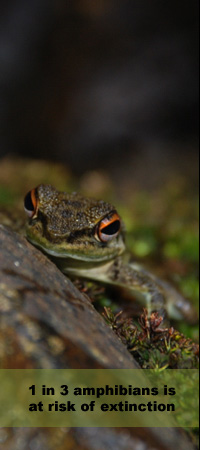|
Endangered Species International is committed to address the rapid decline of amphibians throughout specific research and conservation projects and through our general comprehensive conservation programs. Conservation awareness and outreach are also an important part of our activities.
Through our programs we are strongly engaged to:
Strengthen and encourage the creation of protected areas that cover the ranges of endangered amphibian species that are currently unprotected. Assist the World Conservation Union in revising and updating existing lists of threatened species based on current knowledge. Advise national and local authorities about protecting listed species and their habitats. Enhance outreach activities to educate the public, including school children, about the plight of amphibians. Conduct inventories, monitoring, and research on threatened and poorly known amphibian species.
What can you do to save amphibians?
Eat organic food. By reducing pesticide and fertilizer use, you directly help in reducing the amount of chemical contamination that affects many amphibian species. Avoid releasing environmental estrogens into the water. Environmental estrogens are known to affect amphibian worldwide including human being. Do not use pesticides. Pesticide kills amphibians and insects that amphibians eat. Leave natural and artificial ground cover (e.g., old wood cover boards or dead wood) in your backyard. Ground cover provides moist shelter to amphibians. Leave native aquatic vegetation growing at your pond. It provides food, refuge, and breeding habitat for amphibians. Join campaigns to stop frog and salamander trade. Frog trade has been responsible for introducing amphibian diseases and non-native predators. Send e-mails and write letters to authorities (e.g., United States Fish and Wildlife Service) to encourage them to support amphibian conservation. Protect amphibian from pets. Cats and dogs can disrupt breeding activities of frogs and salamanders. Be a responsible pet owner and discourage your pets from disturbing amphibians. Join Endangered Species International Join the campaign to ban the use of the dangerous herbicide atrazine
Links
Contact
|
|
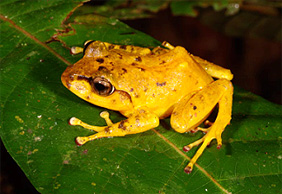
Fiji tree frog (Platymantis vitiensis) is endemic to Fiji. © 2006 Paddy Ryan
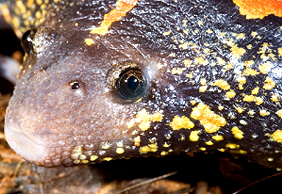
Mexican burrowing toad (Rhinophrynus dorsalis) is rare in Texas and common in Mexico and northern Central America. © 2006 Paddy Ryan
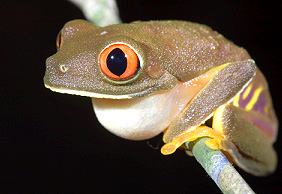
Red-eyed tree frog (Agalychnis callidryas) is usually found near rivers and ponds in lowland rainforests from southern Mexico to Northern Colombia. © 2006 Paddy Ryan
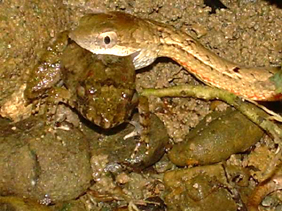
Amphibians fall prey to many species © 2007 Endangered Species International
|

